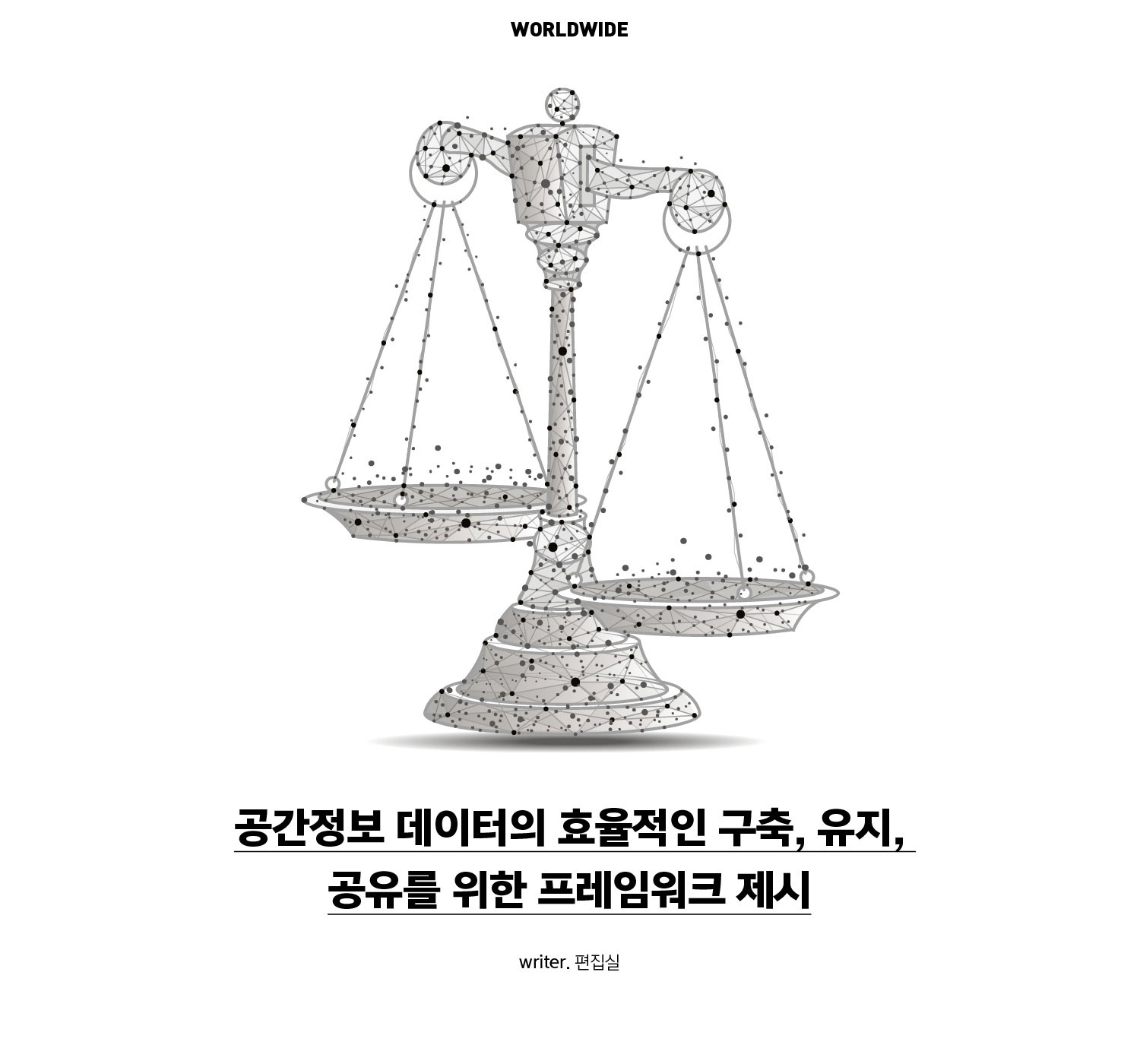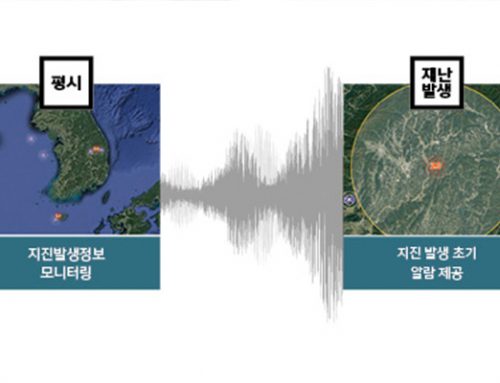
지난 2018년 10월, 미국 트럼프 대통령은 공간정보 산업을 촉진하기 위한 ‘공간정보법’에 서명했다. 미국은 그동안 공간정보의 수집 및 관리에 대한 중앙부처의 부재가 오랜 문제로 대두되어 왔고 2015년 관련 법안의 초안이 발의되었다. 당시에는 정부와 민간, 학계의 의견이 엇갈렸으나 오랜 논의를 통해 모두 찬성하는 법안이 마련되었다. 이로써 공간정보의 수집 및 관리에 대한 중앙부처를 수립, 부처 간의 비효율성을 줄여 세금을 절약하고 공공 및 민간 부문의 혁신을 가속화할 전망이다.
미국의 공간정보법 2018 요약
‘공간정보법’의 태동
114대, 115대 하원 활동 기간 중, ‘공간정보법’이라는 이름을 단 여러 개의 법안이 하원과 상원에서 발의된 바 있다. 하원은 114대 하원 활동 기간 중 발의된 법안은 통과시키지 않았는데 2018년 9월에 발의된 2018 공간정보법안은 ‘H.R. 302 the FAA Reauthorization Act of 2018 법안 7조 F항’에 포함되었다. 2018년 10월 3일에 하원은 H.R. 302 법안을 통과시켰고 트럼프 대통령은 같은 해 10월 5일에 P.L. 115-254를 최종 승인했다.연방정부는 1990년부터 공간정보의 수집과 관리를 좀 더 체계적으로 할 필요가 있다는 점을 알고 있었다. 1990년에 기획예산처는 연방 공간정보위원회(FGDC)의 설립과 데이터의 활용과 공유, 공간정보의 국가적 보급을 촉진하기 위해 연방 차원의 측량, 지도 제작 및 기타 관련 공간정보 활동을 조율하는 ‘Circular A-16’을 개정했다.
The Geospatial Data Act of 2018 Summary
‘공간정보법’의 태동
In the 114th and 115th Congresses, several bills entitled the Geospatial Data Act were introduced in the Senate and House of Representatives. Congress did not act on legislation introduced in the 114th Congress; however, in September 2018, a version of the bill, the Geospatial Data Act of 2018 (GDA), was included in H.R. 302, the FAA Reauthorization Act of 2018, as Subtitle F of Title VII. Congress passed H.R. 302 on October 3, 2018, and President Trump signed it into law on October 5 as P.L. 115-254.The federal government has recognized the need to organize and coordinate the collection and management of geospatial data since at least 1990. In that year, the Office of Management and Budget (OMB) revised Circular A-16—which provides guidance regarding coordination of federal surveying, mapping, and related spatial data activities—to establish the Federal Geographic Data Committee (FGDC) and to promote the coordinated use, sharing, and dissemination of geospatial data nationwide.
이전 하원 의원도 공간정보를 조율하고 지역, 카운티, 주 레벨에서 국가 레벨 사이에 서로 공유하는 것에 대한 어려움을 인정했다. 하지만 공간정보법이 발효되기 전에는 행정부가 연방정부 내에서 공간정보를 조율하고 공유하는 모든 노력을 책임졌다.
관련 이해 관계자들은 연방정부 기관 간에 그리고 연방정부, 지방자치단체, 주 정부기관, 사기업 및 학교들이 공간정보를 좀 더 잘 정리해서 관리할 필요가 있다는 점을 오래 전부터 잘 알고 있었다. 이런 문제를 관찰해 오던 사람들과 일부 이해 관계자들은 공간정보법이 미국 행정부의 공간정보 활동 조율의 범위를 넓히고 효율을 높여 공간정보를 얻는 것과 관련된 중복 진행 사업을 줄여 궁극적으로 세수 낭비를 줄이는 데 도움이 될 거라고 말했다.
Past Congresses have recognized the challenge of coordinating and sharing geospatial data from the local, county, and state level to the national level and vice versa. Until enactment of the GDA, however, the executive branch had led nearly all efforts to better coordinate and share geospatial data within the federal government.
Stakeholders have long recognized the need to better organize and manage geospatial data among federal agencies and among the federal government, local and state authorities, the private sector, and academia. Some observers and stakeholders have commented that the GDA has the potential to improve the extent and efficiency of executive branch agency coordination of geospatial activities and thus to help minimize duplication of effort in acquiring and using geospatial data, saving taxpayers money.
하지만, 공간정보의 관리와 공유에는 항상 중복된 노력이 불가피하게 있을 수 있고, 앞으로도 거대한 정부 시스템 안에 공간정보가 포함된 정부 정보와 관련된, 중복되는 노력은 불가피하게 존재할 수밖에 없다는 주장도 있다.
공간정보를 조직하고 관리하는 어려움에 있어 행정부의 비대한 크기는 상황을 어렵게 만드는 한 가지 요소에 불과하다는 주장도 있다. 다른 행정부 조직의 하는 일에 비해 측량과 지도 제작을 하는 활동은 중복되는 노력을 필요로 하는 성질이 원래부터 있다는 것이다.
However, it could be argued that some level of duplication of effort, and of inefficiency in the management and sharing of geospatial information, will always exist across a vast federal bureaucracy in which a majority of government information has some geospatial component.
It also could be argued that the size of the federal bureaucracy is only one factor contributing to the challenges of organizing and managing geospatial data; surveying and mapping activities themselves are prone to duplication of effort among the different missions and goals of the executive branch.

‘공간정보법’의 탄생
공간정보법은 기존의 많은 구성 요소들을 명문화하거나 관련 내용을 추가로 확장함으로써 ‘OMB Circular A-16’의 일정 부분을 코드화한다. 공간정보법은 공간정보위원회를 존속하게 하며 이번에 통과된 법에 “연방정부, 주정부, 지방자치단체 및 사기업(비영리조직과 대학 포함) 사이에서 공간정보의 공유를 촉진하는 기술, 정책, 기준, 표준과 고용원들을 포함하는 국가공간정보인프라(NSDI)를 수립하는 목표를 지원한다”고 명시했다.‘공간정보법’의 태동
The GDA codifies aspects of OMB Circular A-16, authorizing many of its existing components and modifying or expanding upon other aspects. The GDA continues the FGDC and supports the goal of creating a National Spatial Data Infrastructure (NSDI), defined in the new law as “the technology, policies, criteria, standards, and employees necessary to promote geospatial data sharing throughout the Federal Government, State, tribal, and local governments, and the private sector (including nonprofit organizations and institutions of higher education).”
공간정보법은 하원의 감독 관련 내용이 포함되어 있다. 예를 들어 매년 연방기구의 특정 공간정보 이슈 또는 주제에 대해 성과보고를 의무화했다. 또한 공간정보위원회는 각 연방기구가 공간정보법에 명시된 의무를 다하고 있는지 평가 및 요약을 하도록 했다.
연간 평가 및 요약은 반드시 국가공간정보자문위원회(NGAC: 공간정보위원회에 자문을 제공하고 제언을 하는 역할을 담당)에 제공되어야 한다. 더 나아가 공간정보법은 최소한 2년에 한 번씩 공간정보위원회 연방기구의 실적을 평가해 요약한 자료와 평가에 대한 국가공간자문위원회의 의견, 그리고 이 의견에 대한 각 연방기구의 답변을 하원에 제공하도록 의무화했다.
The GDA adds a number of congressional oversight components. For example, it adds a requirement for annual performance reporting from each of the federal agencies responsible for a specific geospatial topic (or theme), and it requires the FGDC to conduct a summary and evaluation of each agency in fulfilling the responsibilities listed in the GDA.
The annual summaries and evaluations must be made available to the National Geospatial Advisory Committee (NGAC, charged with providing advice and recommendations to the FGDC). Further, the law requires the FGDC to make available to Congress, not less than every two years, a report summarizing and evaluating agency performance, comments from the NGAC, responses to those comments, and responses to comments from the responsible agencies themselves.
공간정보 관련 활동, 즉 정보를 얻고 관리하고 공유하고 사용하는 활동 관련 연방정부의 지출은 하원이 오랫동안 문제를 제기한 이슈다. 관련 우려를 해소하기 위해 연방기구는 매년 예산 제출 시 공간정보 활동 관련 목록을 만들고 관련 자산을 평가하도록 공간정보법을 의무화했다.
공간정보법은 하원이 각 담당기구가 공간정보 관련 활동 예산을 어떻게 배정하고 있는지 볼 수 있도록 해서 각 담당기구의 기여도를 알 수 있게 한다. 이런 정보는 하원이 기획예산처(OMB) 국장(연방 공간정보위원회 부위원회장)에게 예산 관련 일정에서 각 기구의 공간정보 관련 지출이 예산에 어떤 영향을 주는지 볼 수 있도록 도움을 제공한다.
One long-standing issue for Congress has been the cost of geospatial activities to the federal government—namely, what it costs to acquire, manage, share, and use geospatial data. To help address that concern, the GDA requires the responsible federal agencies to inventory and assess their geospatial data assets as part of their annual budget submissions.
The GDA potentially could illuminate for Congress how each responsible agency budgets for its geospatial activities, which may allow Congress to better evaluate what portion of agency appropriations contributes to the federal geospatial enterprise. This information could enable Congress to query the Director of OMB (the vice-chairperson of the FGDC), about the budgetary implications of agency expenditures on geospatial-related activities in each budget cycle.






